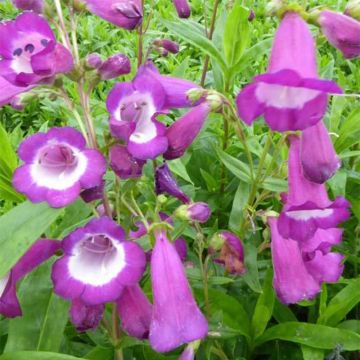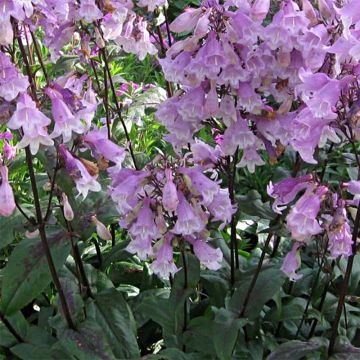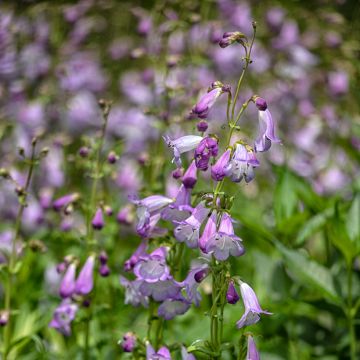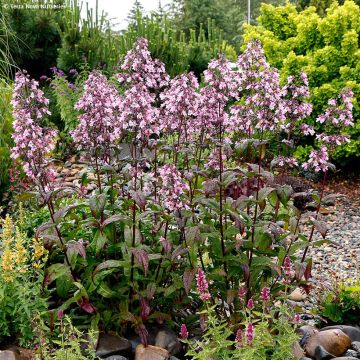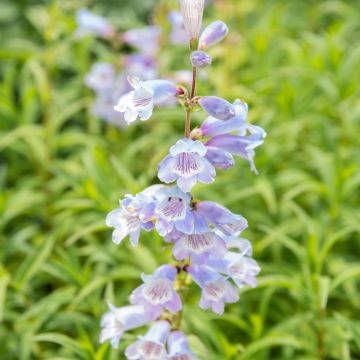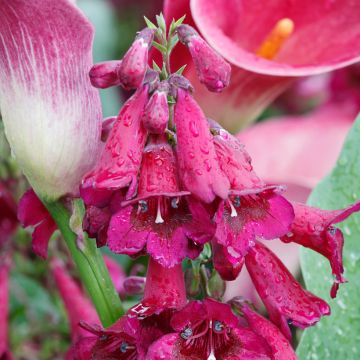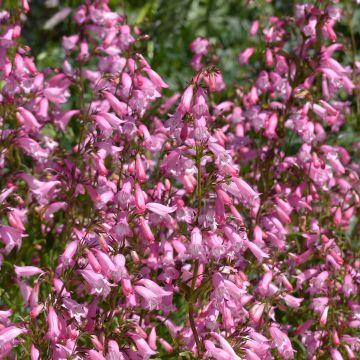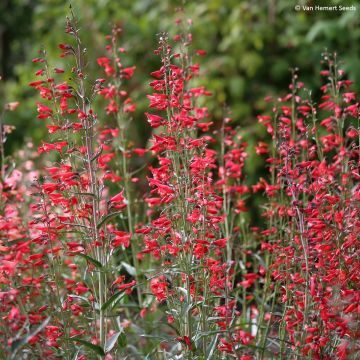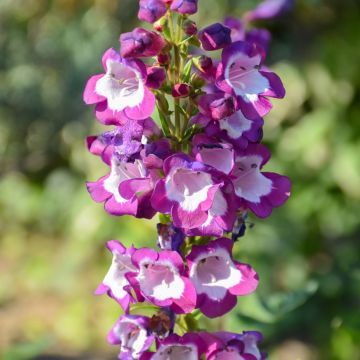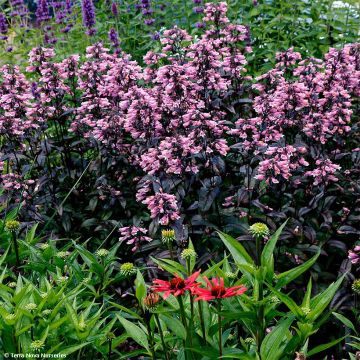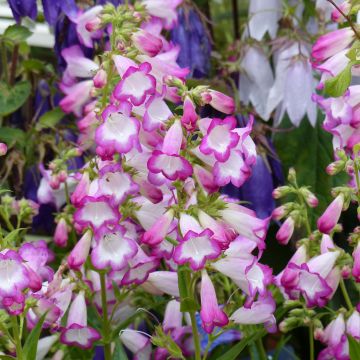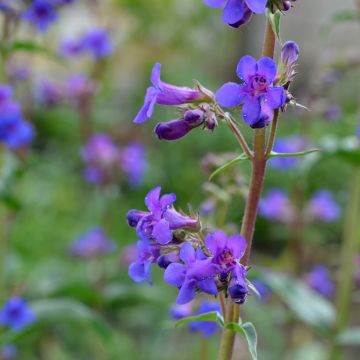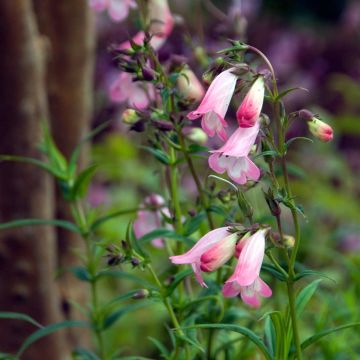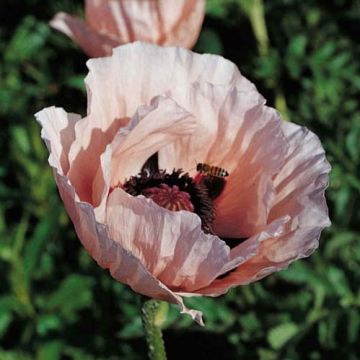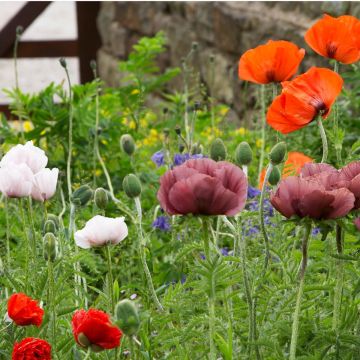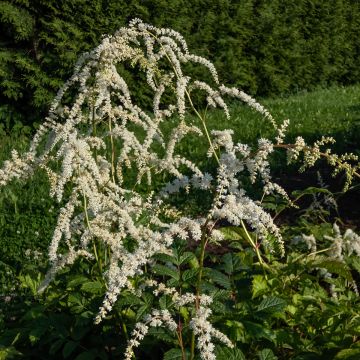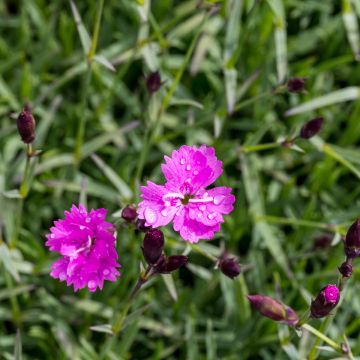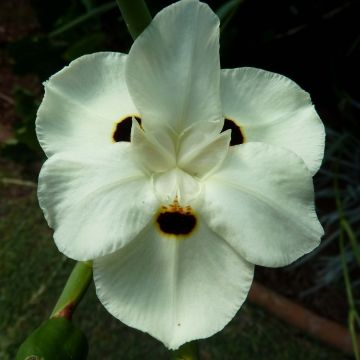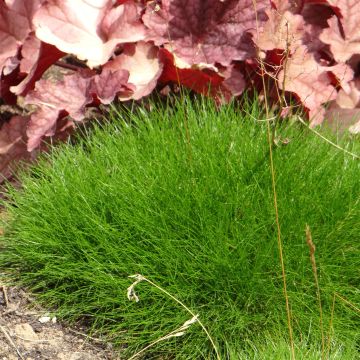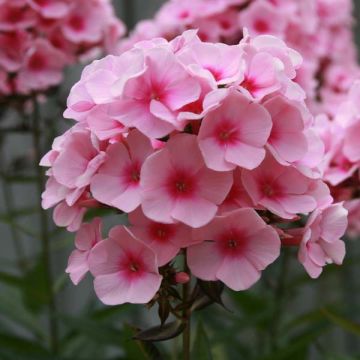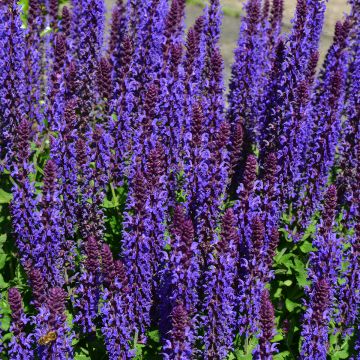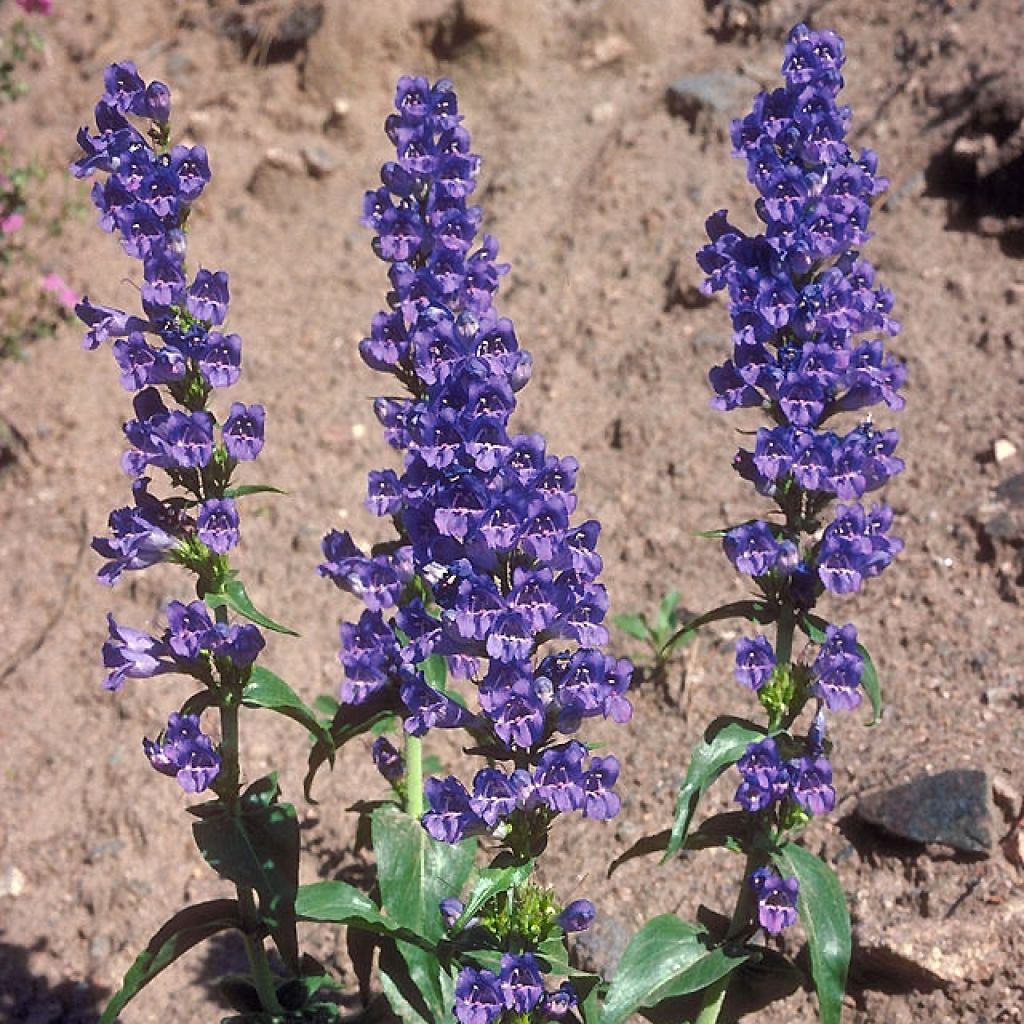

Penstemon glaber - Beardtongue
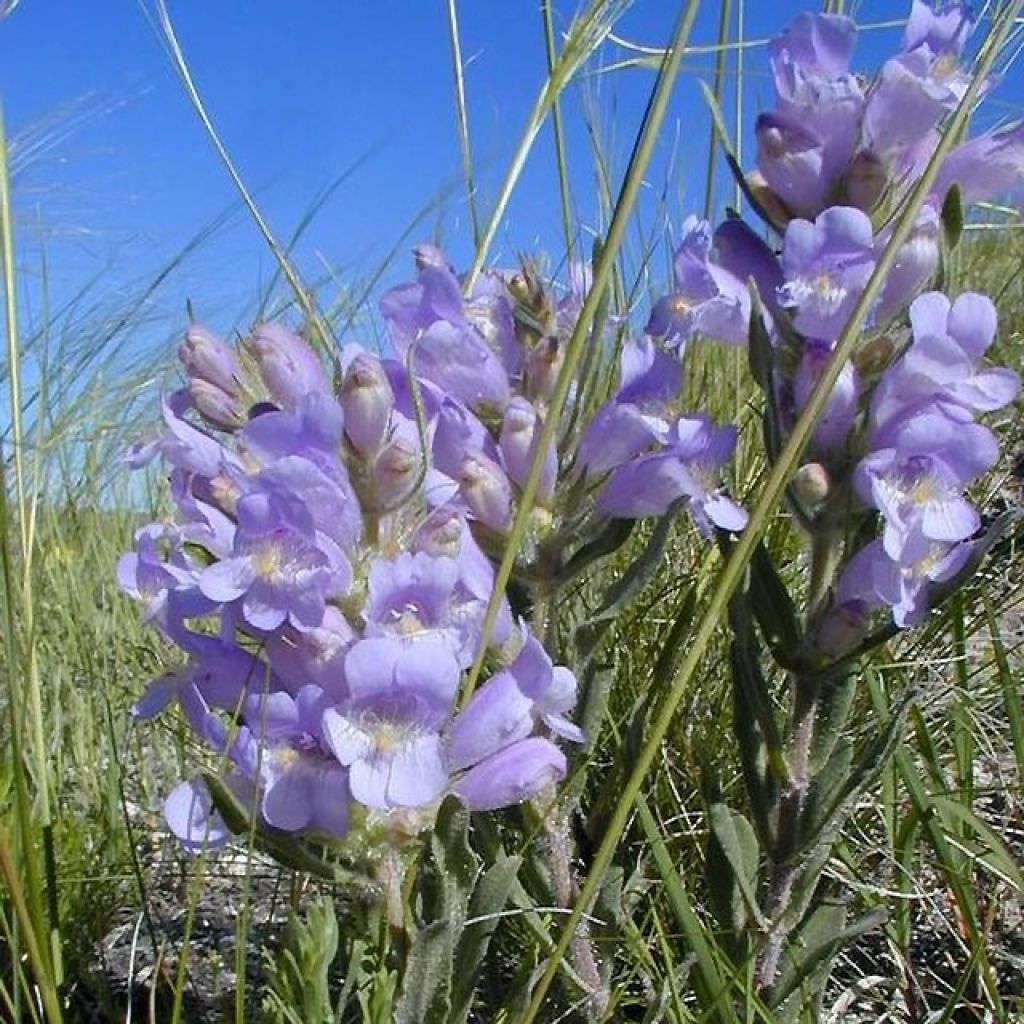

Penstemon glaber - Beardtongue
Penstemon glaber - Beardtongue
Penstemon glaber
Dwarf Blue Penstemon, Showy Penstemon
Has she died ????
Jp, 03/06/2022
Why not try an alternative variety in stock?
View all →This plant carries a 12 months recovery warranty
More information
We guarantee the quality of our plants for a full growing cycle, and will replace at our expense any plant that fails to recover under normal climatic and planting conditions.
From €5.90 for pickup delivery and €6.90 for home delivery
Express home delivery from €8.90.
Does this plant fit my garden?
Set up your Plantfit profile →
Description
The Penstemon glaber combines qualities. It is a hardy and reliable perennial species, not very demanding regarding soil. It offers a generous and charming flowering, ranging from pink to more or less light mauve depending on the temperature, as well as striking foliage at the end of the season. The plant, not very tall and very bushy, dressed in elongated foliage, produces a multitude of bell-shaped flowers of a beautiful size gathered in spikes. Full of charm in summer beds or planted in a pot on the terrace, it is a lovely, not-too-dry rockery plant and a delightful cut flower.
The Penstemon glaber is native to the American West, where it is found in rocky and schistose prairies, as well as in pine forests. Depending on the classifications, it is a bushy perennial plant, woody at the base, belonging to the family of scrophulariaceae or Plantaginaceae. Its above-ground vegetation persists more or less depending on the winter cold. The Penstemon glaber forms clumps of 40 cm (16in) in all directions, with upright stems covered with abundant foliage finely lanceolate of medium green. From September to November, all the vegetation gradually turns to intense red-pink. Its growth is relatively rapid. The flowering extends from June to August, developing on the terminal part of the leafy stems. The flowers, shaped like bell-shaped bells, measuring 3 to 4 cm (1 to 2in) long, are gathered in clusters. They have a lovely colour where pink dominates at the beginning of flowering, and mauve and white take over in July and August. The plant will adapt to any good garden soil properly drained and not too dry in summer, even if it is limestone.
The Penstemon glaber is used in beds or borders among perennials such as agapanthus, catmints, asters, geraniums, and perennial chrysanthemums or mixed with shrubs such as repeat-flowering roses or Caryopteris, for example. It goes well with light annuals such as love-in-a-mist and cosmos. Its pastel flowers are enhanced by dark foliage such as Weigela Minor Black or Physocarpus Summer Wine. It also performs well in pots, with proper drainage and regular water and fertilizer inputs. Penstemons also make perfect cut flowers.
Report an error about the product description
Flowering
Foliage
Plant habit
Botanical data
Penstemon
glaber
Scrophulariaceae (Plantaginaceae)
Dwarf Blue Penstemon, Showy Penstemon
Cultivar or hybrid
Other Penstemon
Planting and care
Penstemon glaber is a tough plant that can survive temperatures as low as -15 °C (5°F) if the soil is well-drained. It won't thrive in heavy, wet soils during winter, but it does well in good, well-worked, and well-drained garden soil that's slightly chalky or acidic. It usually grows on rocky soils, but not too dry in summer.
To grow hybrid penstemons successfully, you need to focus on the soil. These plants typically come from mountainous areas and prefer rich, light, occasionally dry but well-drained soils, especially in winter. They do not do well in hot summers and arid conditions and can rot quickly in excessively wet soils. Choose a warm, sunny spot that's elevated and sheltered from cold winds (south or west exposure) in cool climates. In hot climates, pick a cooler, semi-shaded spot. In very cold regions, take stem cuttings in autumn.
Penstemons don't suffer from specific diseases. You only need minimal maintenance, but when you remove faded flowers in autumn, slightly shorten the deflowered stems without cutting them back to the ground, especially in regions where winter is wet. The foliage plays an important role in moisture regulation. As with shrubby salvias, wait for spring to be well established (March-April) before shortening branches whose foliage has been damaged by the cold. If summer is dry, water regularly to support flowering. Cover the base with a glass or a cold frame in cold regions to protect it from severe cold. Divide your penstemons every three or four years to rejuvenate them, but wait for spring.
Planting period
Intended location
Care
-
, onOrder confirmed
Reply from on Promesse de fleurs
Summer flowering perennials
Haven't found what you were looking for?
Hardiness is the lowest winter temperature a plant can endure without suffering serious damage or even dying. However, hardiness is affected by location (a sheltered area, such as a patio), protection (winter cover) and soil type (hardiness is improved by well-drained soil).

Photo Sharing Terms & Conditions
In order to encourage gardeners to interact and share their experiences, Promesse de fleurs offers various media enabling content to be uploaded onto its Site - in particular via the ‘Photo sharing’ module.
The User agrees to refrain from:
- Posting any content that is illegal, prejudicial, insulting, racist, inciteful to hatred, revisionist, contrary to public decency, that infringes on privacy or on the privacy rights of third parties, in particular the publicity rights of persons and goods, intellectual property rights, or the right to privacy.
- Submitting content on behalf of a third party;
- Impersonate the identity of a third party and/or publish any personal information about a third party;
In general, the User undertakes to refrain from any unethical behaviour.
All Content (in particular text, comments, files, images, photos, videos, creative works, etc.), which may be subject to property or intellectual property rights, image or other private rights, shall remain the property of the User, subject to the limited rights granted by the terms of the licence granted by Promesse de fleurs as stated below. Users are at liberty to publish or not to publish such Content on the Site, notably via the ‘Photo Sharing’ facility, and accept that this Content shall be made public and freely accessible, notably on the Internet.
Users further acknowledge, undertake to have ,and guarantee that they hold all necessary rights and permissions to publish such material on the Site, in particular with regard to the legislation in force pertaining to any privacy, property, intellectual property, image, or contractual rights, or rights of any other nature. By publishing such Content on the Site, Users acknowledge accepting full liability as publishers of the Content within the meaning of the law, and grant Promesse de fleurs, free of charge, an inclusive, worldwide licence for the said Content for the entire duration of its publication, including all reproduction, representation, up/downloading, displaying, performing, transmission, and storage rights.
Users also grant permission for their name to be linked to the Content and accept that this link may not always be made available.
By engaging in posting material, Users consent to their Content becoming automatically accessible on the Internet, in particular on other sites and/or blogs and/or web pages of the Promesse de fleurs site, including in particular social pages and the Promesse de fleurs catalogue.
Users may secure the removal of entrusted content free of charge by issuing a simple request via our contact form.
The flowering period indicated on our website applies to countries and regions located in USDA zone 8 (France, the United Kingdom, Ireland, the Netherlands, etc.)
It will vary according to where you live:
- In zones 9 to 10 (Italy, Spain, Greece, etc.), flowering will occur about 2 to 4 weeks earlier.
- In zones 6 to 7 (Germany, Poland, Slovenia, and lower mountainous regions), flowering will be delayed by 2 to 3 weeks.
- In zone 5 (Central Europe, Scandinavia), blooming will be delayed by 3 to 5 weeks.
In temperate climates, pruning of spring-flowering shrubs (forsythia, spireas, etc.) should be done just after flowering.
Pruning of summer-flowering shrubs (Indian Lilac, Perovskia, etc.) can be done in winter or spring.
In cold regions as well as with frost-sensitive plants, avoid pruning too early when severe frosts may still occur.
The planting period indicated on our website applies to countries and regions located in USDA zone 8 (France, United Kingdom, Ireland, Netherlands).
It will vary according to where you live:
- In Mediterranean zones (Marseille, Madrid, Milan, etc.), autumn and winter are the best planting periods.
- In continental zones (Strasbourg, Munich, Vienna, etc.), delay planting by 2 to 3 weeks in spring and bring it forward by 2 to 4 weeks in autumn.
- In mountainous regions (the Alps, Pyrenees, Carpathians, etc.), it is best to plant in late spring (May-June) or late summer (August-September).
The harvesting period indicated on our website applies to countries and regions in USDA zone 8 (France, England, Ireland, the Netherlands).
In colder areas (Scandinavia, Poland, Austria...) fruit and vegetable harvests are likely to be delayed by 3-4 weeks.
In warmer areas (Italy, Spain, Greece, etc.), harvesting will probably take place earlier, depending on weather conditions.
The sowing periods indicated on our website apply to countries and regions within USDA Zone 8 (France, UK, Ireland, Netherlands).
In colder areas (Scandinavia, Poland, Austria...), delay any outdoor sowing by 3-4 weeks, or sow under glass.
In warmer climes (Italy, Spain, Greece, etc.), bring outdoor sowing forward by a few weeks.

































